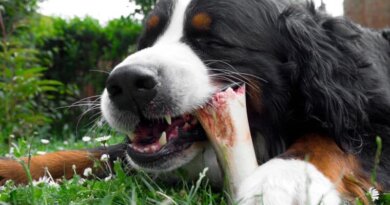Dogs Benefit from Having Choices
Someone once asked me, “What does it mean to allow dogs to choose? Why should they decide where to sleep, walk and play?” I’m often reminded that the idea of giving dogs a choice is dangerously close to anthropomorphism. But I argue otherwise. All animals—those who live in the wild and those who spend their days with humans—make choices every day. Some of those choices cost them their lives, and some help them survive. In either event, the outcomes are at least partially determined by the animal.
Imagine someone else controlling all of your decisions, even the tiniest; over time, you will begin to feel insignificant and anxious. It’s the same with dogs. One might say that, compared to the canine brain, the human brain is far more capable of making informed choices and context-appropriate decisions. But that doesn’t mean that a dog cannot make a decision or choose between various options; while the decision might not be rational from our point of view, it is, after all, a decision.
Dr. Susan Friedman, professor of psychology at Utah State University, uses applied behavior analysis—the study of how behaviors change or are affected by the environment, as well as how learning takes place—with companion animals. She believes that, like humans, when dogs have control over or knowledge of an event’s outcome (i.e., freedom of choice), they are less likely to become aggressive or have behavioral issues. Skittish dogs build confidence and independent dogs channel their energy though the process of making decisions. For any animal, it’s less stressful to feel as though there’s a choice than to be forced into one position or another.
At a dog park recently, I watched as people encouraged their dogs to “make friends” with other dogs. The dogs weren’t given the freedom to choose who they’d like to meet; instead, their owners decided who was best for them. This created a potentially serious problem: a dog who didn’t want to “play” with the dog chosen for him might communicate that lack of interest in the form of a growl and a bite and then be labeled as aggressive. In reality, the problem is misinterpreted communication and a lack of freedom to choose.
GET THE BARK NEWSLETTER IN YOUR INBOX!
Sign up and get the answers to your questions.
Most animals, including dogs, make decisions that we’re able to recognize as rational. My mother’s six-year-old Irish Setter, Duke, has a choice between two kennels, one with a comfortable bed and the other with more space. He chooses more space during the day and prefers the comfortable bed at night. Fifi, a three-month-old Golden Retriever, is given a choice to retreat to a quiet “safe” place when she finds her environment overstimulating. Her “quiet place” is hers only, and it helps her calm down within the chaotic excitement that often surrounds puppies.
Choices don’t always have to be significant; they can be as simple as allowing the dog to decide whether she wants to be petted, or not. A dog who approaches guests on her own is less likely to feel anxious or defensive than she is when guests invade her space to greet her. Bella, a four-month-old Cocker Spaniel, waits patiently with her owner in the family’s garage. When four of her owner’s teenage friends come running in to meet her, Bella scampers under a car. She is then brought out, carried around and played with. Throughout this experience, she is extremely anxious because she did not have the choice to sniff her owner’s friends and decide whether she’d like to be petted or not.
The context in which choices are offered is certainly relevant. There are times when, due to risks to dogs’ safety—traffic, environmental hazards, other animals or people who may not wish to engage with them or who may respond in a threatening manner—there is absolutely no way they can be allowed to make a decision. In those cases, we need to make decisions on their behalf.
However, there are many low-risk situations in which our dogs can safely be allowed to make choices: which toy to play with, which direction to take on a walk, which tree to pee on, how long to sniff the grass and so forth. These little decisions go a long way toward strengthening an existing relationship and building lasting bonds with our dogs. Dogs who are confident because they are given some control over their actions and environment become less nervous, anxious or stressed. When dogs are less fearful, the possibility of undesirable “aggressive” behavior is significantly reduced.
Take time to think of the ways you can grant your dog some freedom of choice. Identify five things you’re comfortable with allowing your dog to decide on a daily basis. Then, rather than ordering your dog to do something, allow her to be the influencer of certain outcomes. Although it may take patience on your part, giving dogs choices leads to a less-stressed, more emotionally healthy dog and builds a relationship of mutual respect and friendship.





купить бетон
купить бетон раменское